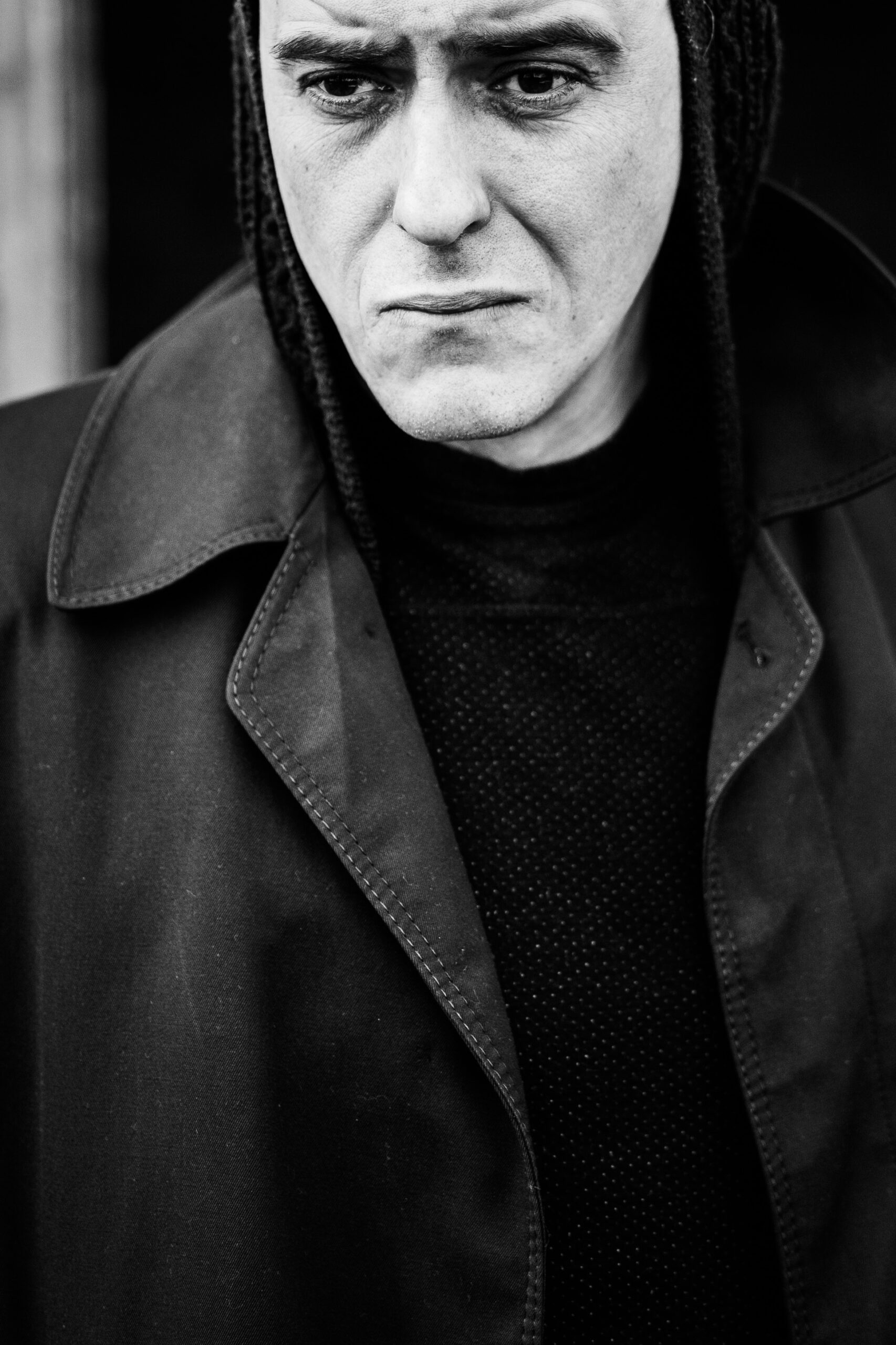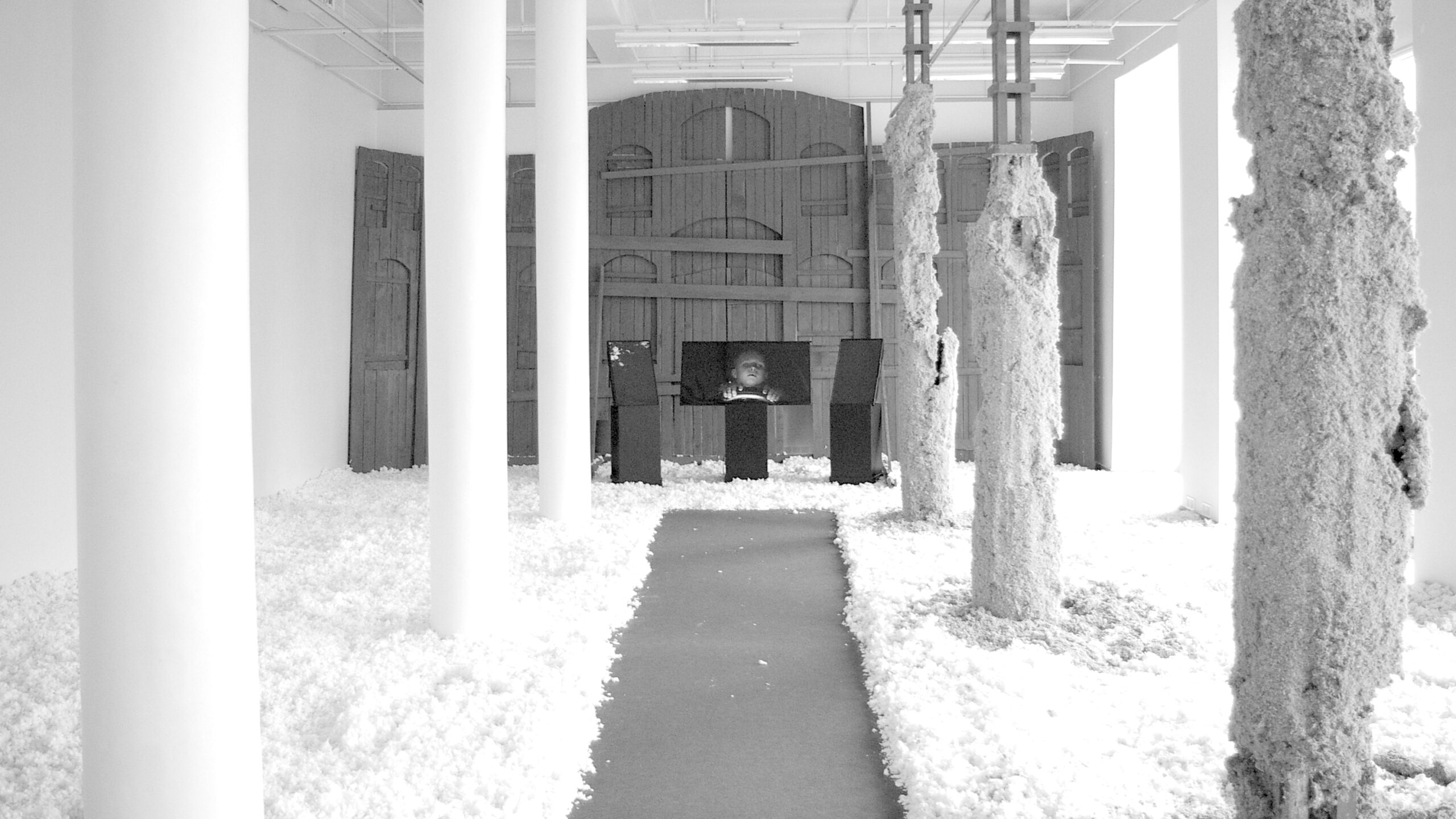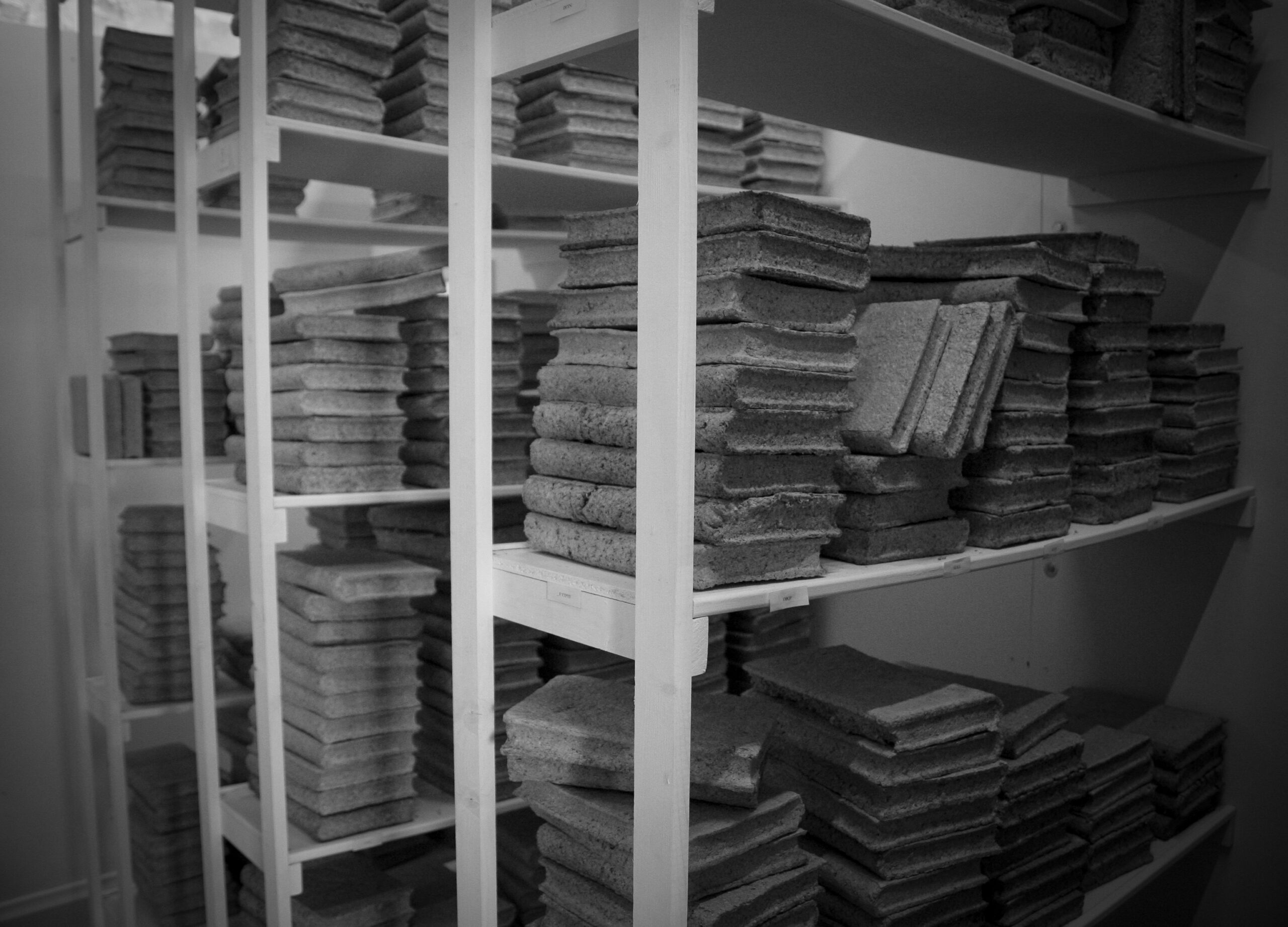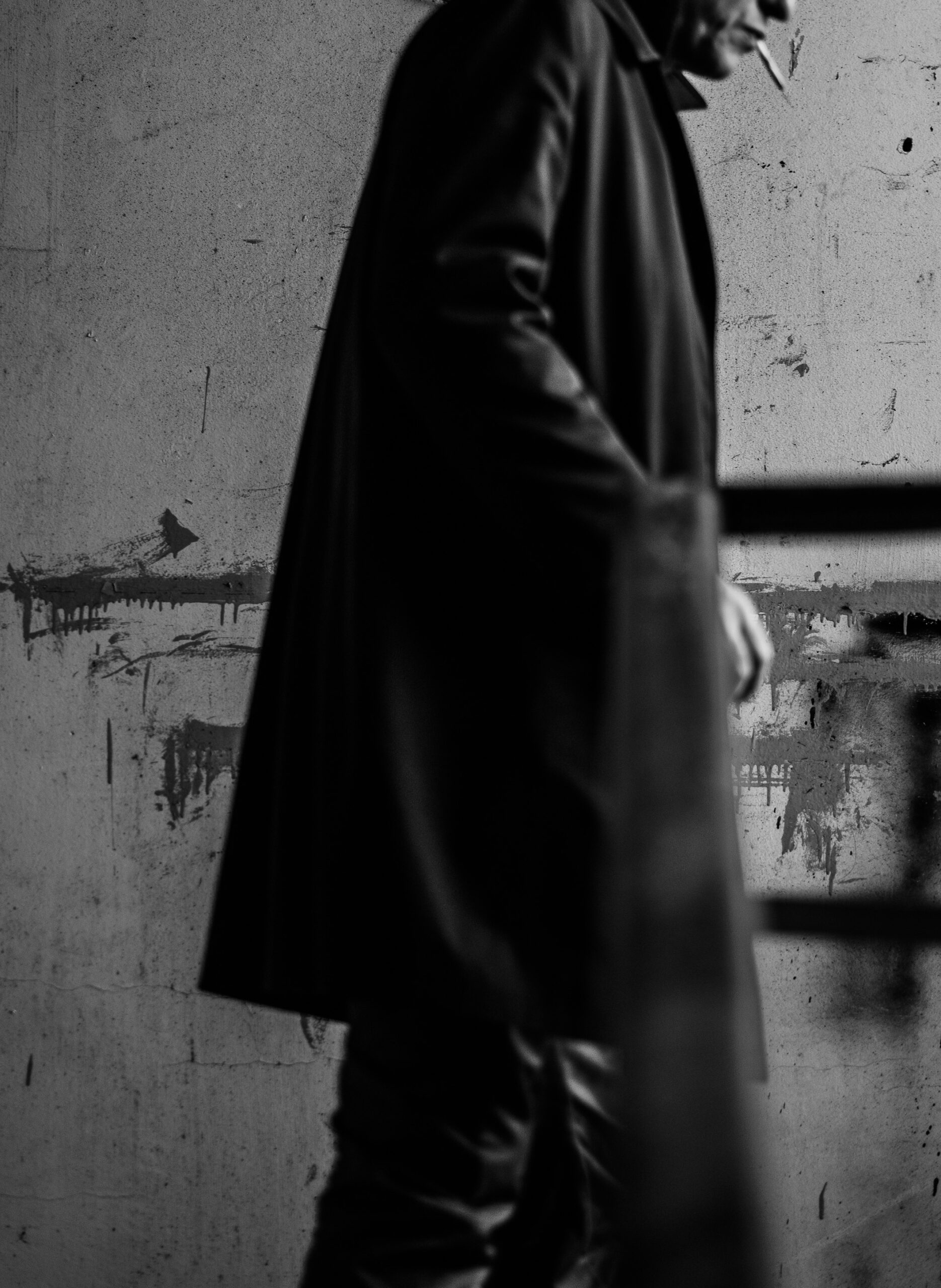
Jevgeni Zolotko was born in 1983 in Tartu, where he still lives today. He's a sculptor by education, receiving training at the Pallas University of Applied Sciences. During the two decades Zolotko has been working as an artist, he has received all of the most notable Estonian art awards, including the first Köler Prize from the Contemporary Art Museum of Estonia in 2011. His projects have great visual impact and conceptual richness. Zolotko has a special talent for creating works that are simultaneously sublime and grand, while also being humble and modest – a lot is said, even more remains unsaid. Luckily, in visual culture, words are always second-rate.
Anti Saar: Was it inevitable that you became an artist? Do you remember making a conscious choice to become an artist? What did you know about art when you began your studies at the sculpture department?
Jevgeni Zolotko: I probably had a stereotypical image in my mind from art classes in school and from literature: the image of an artist being someone with a beret and scarf standing on a hill. When I was 17, I studied to become an electrician and at the time I wasn't exactly sure what it meant but at one point I realised I wanted to be an artist. Although, I don't think it's a calling, I arrived at it rather through a sequence of facts of life. By now, it has become the thing I do best, so I do it.
AS: You've been showing works generally in grey tones since you were in school. At least in Estonia, the so-called Zolotko grey has become a trademark of sorts, something akin to Yves Klein's blue. But I'm not that interested in why you've chosen to stick with grey but instead, how you came to it.
JZ: Well, I can talk about the grey anyway. I don't think it was a particularly long path for me. There was an exhibition titled Grey Signal. That was the name of the colour code. I intended to use grey as a motif, so I went to the hardware store to pick out a colour and found one with a label that read in German: Signal Grau. There was a contradiction in the name: grey signals nothing, it stands in-between contrasting poles. I immediately loved the paradox and perhaps it was that very name that prompted everything else.
AS: Can you imagine that you could have been fascinated by the name of another colour code and you would still be making, let's say, Prussian blue works?
JZ: Yes, or perhaps in the colour Peach on Sunset! But really, all that talk about my trademark is a bit of an overkill. It's not something I pushed myself, that came from art critics. Somebody just latched onto that grey and somehow it began to repeat itself. But for me, grey has not been a principal element for a long time.
AS: But it still remains part of your artworks.
JZ: Maybe it's because I have no idea how to use colour.
AS: Or maybe you take in what art critics say?
JZ: To an extent, absolutely. When people say you keep making grey works, at some point you will yield to it, whether you want to or not. But in hindsight, it seems that with the exhibition Lukewarm, I exhausted these ideas – the grey and the in-betweenness.
AS: So, do you feel you constantly develop in terms of form as well?
JZ: No, definitely not.
AS: But when did you feel you had reached maturity?
JZ: I don't think I'm mature now. At some point there was a moment I started feeling my power. You know, like a child: at first you are small and crawl, then you start walking, stumbling against everything, and then you suddenly gain the ability to control your body because your coordination develops. And I think I, too, realised at one point that I can now control my power as an artist. This was a great discovery and a proud feeling.

AS: Does that mean maturity is not a significant category for you? Or do you still notice artists around you who you'd say are mature and masterful?
JZ: Yes, I certainly do. It's just that I can't say that about myself for sure. I'm at a place, where I very clearly know where my capabilities end and at the same time, I feel powerless against what I can't reach. It's like the horizon keeps moving farther away from you, even though you keep stepping towards it with your work. Such a banal thing to say but maybe the journey is the goal. However, it's not a difficult but an exciting and adventurous process.
AS: Your artistic style definitely also includes an element of monumentality, the so-called quantitative dimension. In It's Time to Take Ceilings Down and Base, you used cubic metres upon cubic metres of cellulose wool, in Archivist you had "books" pressed of the same material. Sacrifice features a trailer that weighed several tonnes and many kilos of paint was needed to paint it. In Things, everything that was found in an attic of a large public building was refined as art. Silence tells a fragmented, yet detailed story of a person's life. Despite the monumentality, many of your works are temporary, they only materialise for the period of the exhibition, falling into dust or becoming material for your next artworks. What I want to say is that your exhibitions mostly present something big that disappears soon after. A contrast to that could be a porcelain elephant on the mantle piece, a tiny but eternal object. I see a certain kind of existentialist stance in your artistic profile. How would you describe it?
JZ: In my case, monumentality comes from the need to multiply the meaning mechanically, to broaden its reach. It's a way of sublimating little facts of life into wider generalisations. I can say: let's keep the windows closed, it's cold outside. But I can also make a whole stadium full of people saying it. In that case, the phrase inevitably acquires a metaphysical dimension.
So, if all of the things I make were not temporary, I can't imagine having the courage to take on the next one. An exhibition is an event, similar to a concert, or an experience, it is not a product. It lasts for a specific period of time and I'm glad it does not leave anything behind. If everything I have made were to be stored or archived, I could fill up several hangars with various bits and pieces of questionable value. But these pieces without people between them mean nothing.

AS: Generally, your art is multimodal. Sound, light, text and even smell all play a part. Is that kind of complexity always necessary? Or do you use all of these media simply because they are accessible?
JZ: I always try to be rational when it comes to different media: when I see that I need to use photography to convey an idea, that is what I do, when video is the most suitable, I'll do that – everything serves the goal. Multimodality in itself is not valuable to me. If there was something I could write down on a napkin that would rationally be enough, that's what I would do.
AS: Please describe your artistic process a bit. How does the artist work?
JZ: Let's start with this: first, I need an external stimulus, otherwise I can't start working. I'm either invited somewhere or asked to do something. Then, I walk around the city and listen to music, or not. I wait. I keep on waiting. And then maybe... an image or... a sense of a whole will arrive, something that is outside the verbal. When I get to that point, it makes me very happy. It's not that the process is difficult to describe, it's impossible. It's not the solution but I nevertheless begin to sense a whole. After that, the routine analytical and constructive work begins. This is when I write and try to describe what the work could look like. When words are no longer any help to me, I might need to sketch something: it is immeasurably difficult to describe three lines, compared to drawing these lines on a paper. Little by little, different elements and motifs appear. Depending on the nature of the work, I choose my tools, be it film, photography, drawing or something else.
So, to sum up: at first, there's a mysterious feeling and then, very simple and logical solutions that come through conscious work. But intuition about the whole is present from the very beginning. That is important. It's a bit like this: you sit by a stream, take water into your hands and carry it where you need it while making sure nothing gets lost.
AS: Art critics often also claim your art is religious. And indeed, there are only a few works where you do not include quotes from the bible. Do you think that the audience is up to par with this, considering that in Estonia people are mostly blind to religion? Or does this not matter to you at all? Because sometimes it seems that your expectation is that people should encounter your art from a tabula rasa position, like children. In other words, if your art is revelational, it is that precisely outside these apocrypha. What's your stance on that?
JZ: Such big words... revelational. Yes, I'm not afraid to use quotes from the bible but that says nothing about whether I'm religious or not, it does not define me. It's the kind of text there is no way around anyway. There are certain touch points with this great narrative. At one point I did think about what kind of a viewer I'd like for my work. An open heart is enough, really. How educated they are or how well they know the bible... that does not matter. I expect empathy, I mean, I'm quite vulnerable in my work, and that is deliberate, so maybe I expect the same from the viewer. That is where we meet.
AS: Isn't it scary to display your vulnerability like that, in front of an audience you have no personal relationship to?
JZ: Yes, but you see, it's important to note that what's vulnerable here is the artwork, not me personally. I keep growing shells and barriers for myself, so that I won't give too much of myself and won't take too much into me. But the works are quite simple, I try to accommodate the imaginary viewer and to a degree, I expect the same from the viewer: consideration and good intentions towards my work. And if we can meet there, that's good enough for me.

AS: Does that mean you also believe that the viewer can encounter the same intuition that made you happy when you were walking around the city and began getting the first sense of your future exhibition?
JZ: No, I don't believe that. And that's also not necessary. It would be foolish to expect some sort of merging of souls, you don't even get there with your wife of 20 years. It's already enough if we see things the same way even a little bit.
AS: You also teach young people. What is the message or the values you instil in them the most? With what do they inspire or surprise you the most?
JZ: I mostly teach students in higher art education who have already made a choice regarding their profession. And I try to deconstruct that choice, so that they'd understand it is not the only possible one. That their life has value also beyond the idea of them as artists. Many of them are in the same situation I once was – the cart is before the horse.
People think they are becoming an artist now and only after that they will become this or that kind of a person. I want to make it clear to them that this does not determine their fate. You need to live your life in order to have material to make art.
But what do I get from them? Their lives are so much more complicated than mine. I feel for them. It also gives me hope that there are still people who are interested in art. Sometimes I feel that art schools are like leprosaria, where those who are ill find refuge. They receive a bit of recognition and the climate is softer.
AS: But is art still around because there are people who keep making it or do people who do not make art still need it as much as ever?
JZ: I really don't know. To find out, the entire system should be shut down. There has never been a time without art. We just don't have an experience like that.
AS: What keeps you in Tartu? Could you imagine yourself living or working elsewhere in Estonia or in the world?
JZ: What keeps me in Tartu are the children and those who are buried here. I could see myself working in different places. But when I zoom into that fantasy, I have to be honest, I can't stretch my imagination farther than Setomaa (a region in South-East of Estonia, bordering Russia – Ed.).